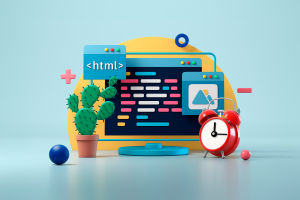In our fast-paced lives, overusing our eyes has become the norm. Whether it's from long hours of reading or constantly staring at screens, our eyes often send out distress signals in the form of eye strain.
This article explores the causes of eye strain, who is most susceptible, and practical tips to prevent and alleviate this common issue.
Recognizing the Signs of Eye Strain
Eye strain can manifest in several ways, and it's important to recognize these early warning signs:
- Temporary Blurriness: After focusing on a close-up task like reading or using a phone, your vision may become temporarily blurry.
- Eye Discomfort: Symptoms like burning, sensitivity to light, tearing, dryness, itching, and aching can indicate that your eyes are tired.
- General Symptoms: Headaches, dizziness, reduced memory, and even nausea can be signs of eye strain, affecting both your physical and mental well-being.
Who Is More Likely to Suffer from Eye Strain?
Certain groups are more prone to eye strain:
- Screen Users: Prolonged screen time reduces blink rates, leading to dry eyes and strain. Screen brightness, angle, and resolution can exacerbate the problem.
- Children: With increased screen time for educational purposes, children are more susceptible to eye strain.
- Dry Eye Patients: Dry eye and eye strain often go hand in hand, creating a vicious cycle.
- People with Refractive Errors: Incorrect eyeglass prescriptions or significant differences in eye power can add extra strain.
- Those with Visual Dysfunction: Conditions like intermittent exotropia or acute comitant esotropia can affect how the brain processes visual signals, leading to strain.
- Stressed Individuals: High stress levels can lead to eye strain, especially in activities like driving.
- Women: Hormonal changes during pregnancy can make women more susceptible to eye strain.
Strategies to Combat Eye Strain
Here are some practical tips to help you manage and reduce eye strain:
- Limit Screen Time: Take regular breaks from screens. Every 15 minutes, look away from the screen to give your eyes a rest.
- Improve Lighting: Avoid using screens in dim light. A good desk lamp or a light attached to your screen can reduce glare and make viewing more comfortable.
- Adjust Posture and Screen Position: Position your screen slightly below eye level to reduce eye dryness and neck strain. Maintain proper posture when using a phone.
- Increase Humidity: Use a humidifier or wear moisture chamber glasses to keep your eyes moist in dry environments.
- Get Proper Eyewear: Regular eye exams and accurate prescriptions are crucial. Incorrect glasses can worsen eye strain.
- Seek Medical Advice: If you experience unusual symptoms like skipping words, difficulty reading, or double vision, consult an eye doctor. Dry eye patients should follow medical advice for treatment.
Eye strain may seem like a minor issue, but it can significantly impact your quality of life. By recognizing the signs, understanding who is most at risk, and implementing these strategies, you can protect your eyes and maintain clear vision. Small changes in daily habits can make a big difference in reducing eye strain and preserving your eye health.


